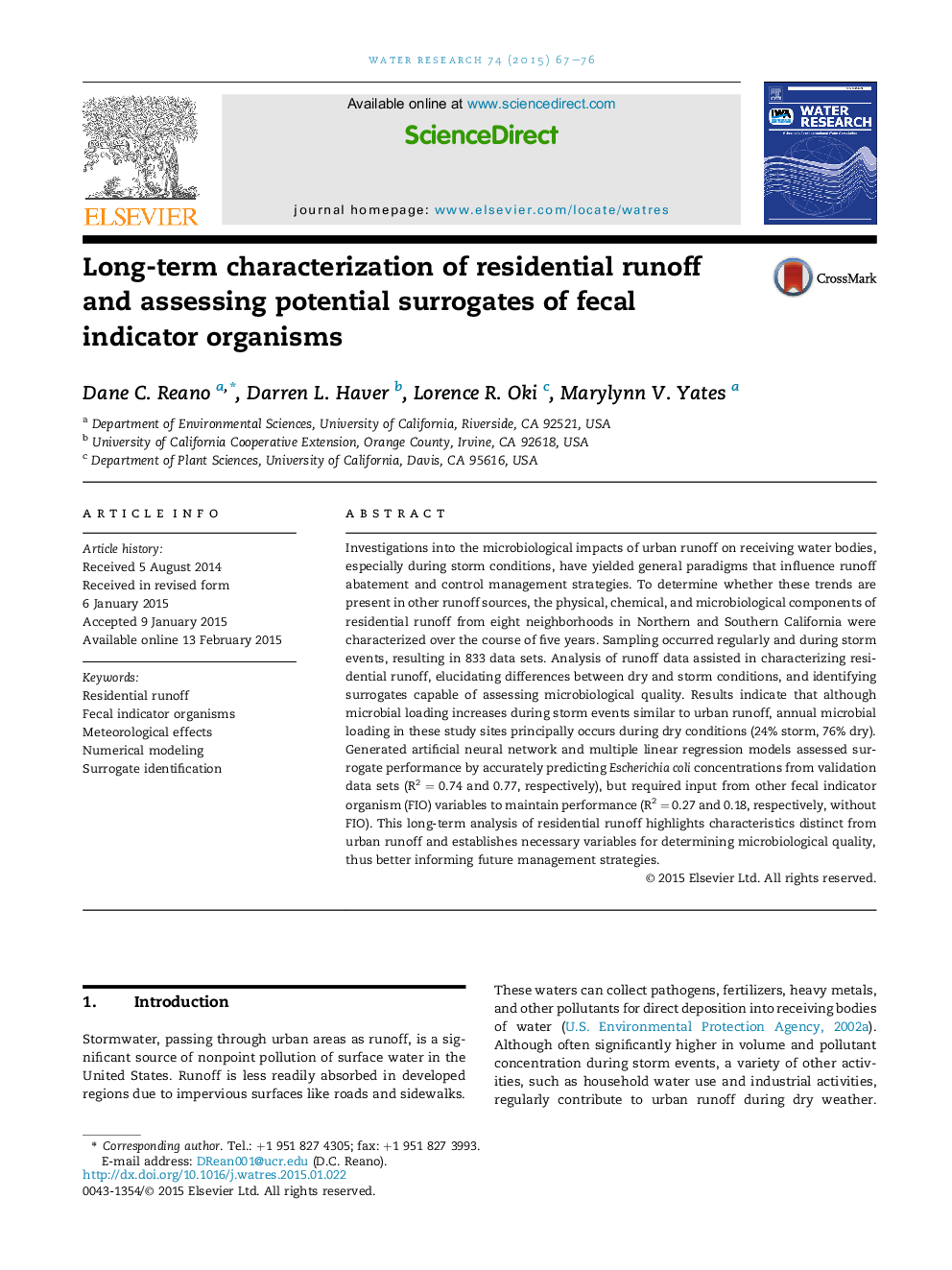| کد مقاله | کد نشریه | سال انتشار | مقاله انگلیسی | نسخه تمام متن |
|---|---|---|---|---|
| 4481265 | 1623094 | 2015 | 10 صفحه PDF | دانلود رایگان |
• Baseflows accounted for a majority of annual microbial loading in residential runoff.
• Storm events exhibited significant, albeit marginal, increases in microbial loading.
• Models required other microbiological parameters to predict E. coli titers.
Investigations into the microbiological impacts of urban runoff on receiving water bodies, especially during storm conditions, have yielded general paradigms that influence runoff abatement and control management strategies. To determine whether these trends are present in other runoff sources, the physical, chemical, and microbiological components of residential runoff from eight neighborhoods in Northern and Southern California were characterized over the course of five years. Sampling occurred regularly and during storm events, resulting in 833 data sets. Analysis of runoff data assisted in characterizing residential runoff, elucidating differences between dry and storm conditions, and identifying surrogates capable of assessing microbiological quality. Results indicate that although microbial loading increases during storm events similar to urban runoff, annual microbial loading in these study sites principally occurs during dry conditions (24% storm, 76% dry). Generated artificial neural network and multiple linear regression models assessed surrogate performance by accurately predicting Escherichia coli concentrations from validation data sets (R2 = 0.74 and 0.77, respectively), but required input from other fecal indicator organism (FIO) variables to maintain performance (R2 = 0.27 and 0.18, respectively, without FIO). This long-term analysis of residential runoff highlights characteristics distinct from urban runoff and establishes necessary variables for determining microbiological quality, thus better informing future management strategies.
Figure optionsDownload high-quality image (110 K)Download as PowerPoint slide
Journal: Water Research - Volume 74, 1 May 2015, Pages 67–76
